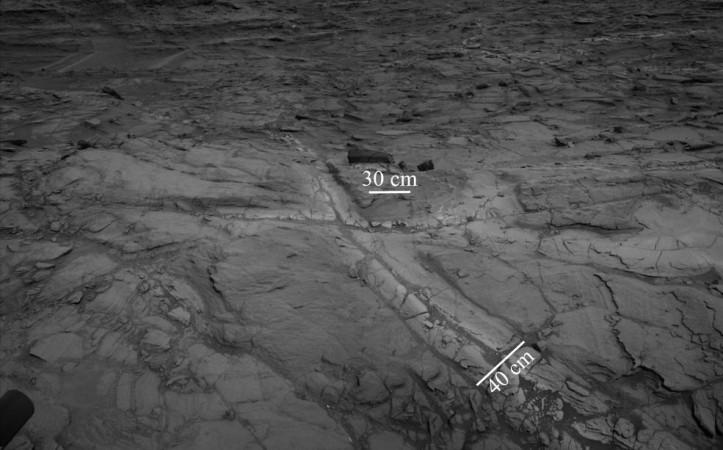
NASA's Curiosity rover has discovered that ancient Mars had liquid water for a long time. This finding came to light after pale zones referred to as 'halos' consisting of high copious silica concentrations were detected around the fractures in the bedrock of the Martian surface.
Also Read: NASA: Cassini discovers Saturn's moon Enceladus may have tipped over due to asteroid collision
This finding came to light after pale zones referred to as "halos" consisting of high copious silica concentrations were detected around the fractures in the bedrock of the Martian surface.
"The concentration of silica is very high at the centerlines of these halos," said the lead author Jens Frydenvang, a rover-team scientist at Los Alamos National Laboratory in New Mexico, and the University of Copenhagen in Denmark.
"What we're seeing is that silica appears to have migrated between very old sedimentary bedrock and into younger overlying rocks," Frydenvang added.
The Curiosity rover had landed on the Martian surface in 2012 with the aim to find out if Mars was ever habitable for microbial life.
"The mission has been very successful in showing that Gale Crater once held a lake with water that we would even have been able to drink from, but we still don't know how long this habitable environment endured," Frydenvang said.
"What this finding tells us is that, even when the lake eventually evaporated, substantial amounts of groundwater were present for longer than we previously thought -- further expanding the window for when life might have existed on Mars," he added.
The halos were first analysed in 2015 with Curiosity's science payload, including the laser-shooting Chemistry and Camera (ChemCam) instrument, which was developed at Los Alamos National Laboratory in conjunction with the French space agency.
The higher and younger layers of the lower Mount Sharp have also been explored by the rover to investigate how the ancient environmental conditions changed.
Mars is being explored by two rovers and three orbiters, which would help in understanding the planet further and aid in the mission of sending humans to Mars in the 2030s.

















